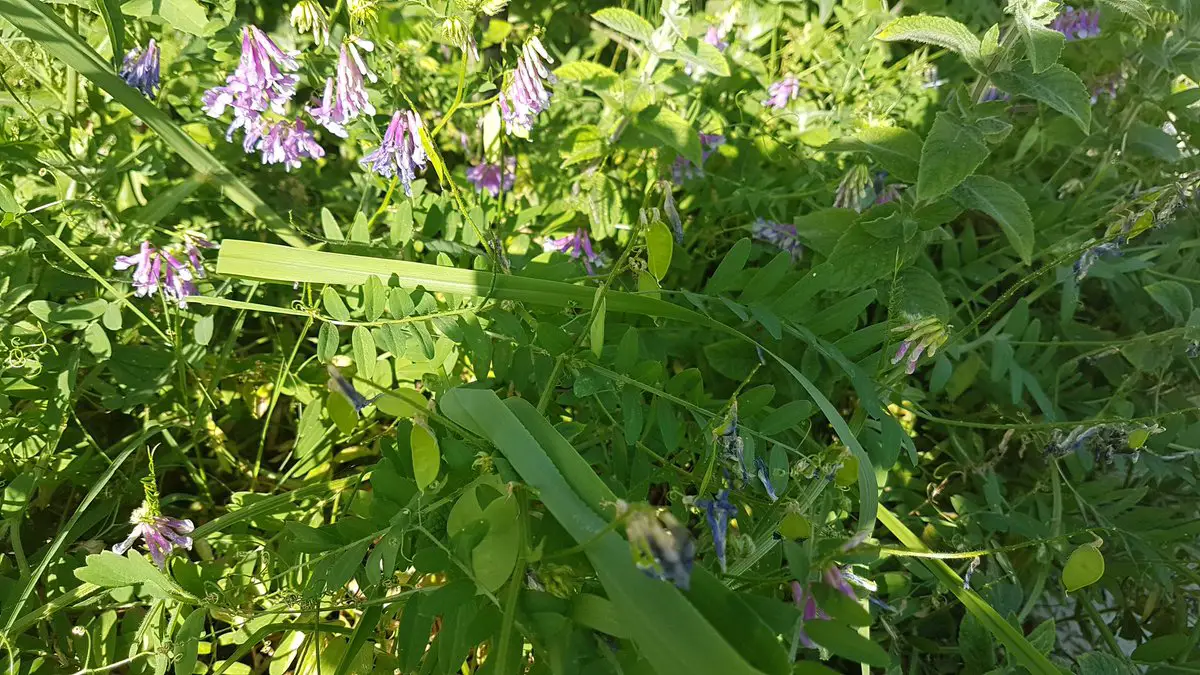
The vicia sativa is a herbaceous plant that, as is known, has its origins throughout the Mediterranean area and Africa and Asia areaand then distributed without any inconvenience around the world.
This has to do with It is widely used in the livestock environmentas fodder and in fruit crops. This plant is very beneficial for the earth, giving it greater vitality to give rise to better crops, so in this article we will show you its characteristics and its importance.
Where did the name come from vicia sativa?

The genus of plants called Vicia, among which there are 230 accepted speciesamong the more than 900 found in nature, bear that name since ancient Rome, being Marco Varrón, a military man and official of that empire, who for the first time named this class of plants that were previously called Veza, by the name of Vicia.
This apparently is because one of the characteristics of the vicia sativa is to go up between another plant climbing it, so this way of calling would evoke the verb Vincere, which means to Winand it is that this “defeats” the plant to which it climbs, surrounding it completely.
Features
When we talk about this plant, we mean an annual plantof the herbaceous type, which belongs to the family of the legume plants, being a plant that measures in its smallest exponents, between 10 and 15 centimeters, to reach a greater height of between approximately 75 and 80 centimeters.
The plant in its systematic form is rectangular and has fickle stemswhich means that it can be tied to some other plant, guiding it in its growth or climbing on different surfaces. This will grow depending on the climate and in areas where the spring climate presents a large amount of rainfall, this can exceed the measure of 80 centimeters that we mentioned earlier.
The vicia sativa It has in its composition leaflets that appear in an opposite way on the rachis, but in pairs, that is why it is said that its leaves are paripinnate. They are generally composed of between 4 or 8 pairs of leaves, culminating in one end formed by tendrils that contain ramifications.
The color of its flowers is very intense, getting to show very strong purple features in its first bloomsto reach a slightly more reddish color during its adult stage.
These can measure between 10 and 30 millimeters approximately and their corolla in general forms a structure similar to a butterfly. In the case of its inflorescence, it is presented in the form of a raceme, showing the bases of its well-united filaments and giving between 1 and 2 flowers that lack a peduncle.
Fruits and seeds
In the case of fruits, these are legume in naturereaching a length that can reach about 8 or 9 centimeters and be of colors that go from a greenish yellow to a brown and dark color during its maturity. In about 100 grams of weight they can fit about 1000 seeds approximately, so their weight is truly light.
Its seeds have a flattened and oval shape and also present colors similar to those of its fruit, although the most common in this species is to see seeds that have brown spots, freckledin backgrounds of a color that goes between the yellowish gray and the strongest yellow.
Although the place of origin of this plant is not specific and explicit, it was concluded that it is surely a native European plantIts proliferation sites are also North African and Asian and extending to the areas of China and Siberia, being really very common in all these mentioned places.
Farming
The vicia sativa It is cultivated around the world, since it is a good complement for forage and is very beneficial for the land of other types of crops. Shows a particular resistance to coldwhich becomes more acute when it reaches its highest growth.
The temperature that best suits you for your cultivation, can be around 18-27 degrees CelsiusThe arrival of summer being a time when it will need more water to reach a successful harvest, so that is the time to reinforce its treatment and provide it with greater hydration.
Almost no soil will be an impediment for this crop to develop. There will have to be a very clay soil and without any type of nutrient so that it does not develop. Contrary to many other plants of this type, you don’t have to do too much work to get a good crop on your land.
Benefits

In addition to being one of the plants widely used as forage, the vice sativa it is also very important for the earth where other types of crop species that are frequently used will be cultivated. It is that this species achieves a very important contribution of atmospheric nitrogen to the earth, something that allows the growth of many other crops.
In this way it is usually used as a predecessor, to “prepare” the land for the cultivation of sorghum or corn, among many other species of plants. In terms of forage, can come up with one that presents a lot of balanceas long as it is mixed with some other grass as a complement, since in its pure state, it could be harmful to animals, because it contains a glycoside substance and a bitterness that is generally rejected by cattle.
The maximum use of the fruit occurs when its legumes are still in a state of immaturity, and the pod has not yet been fully formed. It is the best time to obtain them without these having deteriorated or have lost their properties.
You already know all the features and benefits of the vicia sativaa plant highly recommended as a complement to crops of all kinds of grainsfor their contribution of hydrogen, and to strengthen the earth or use them as a guide.

